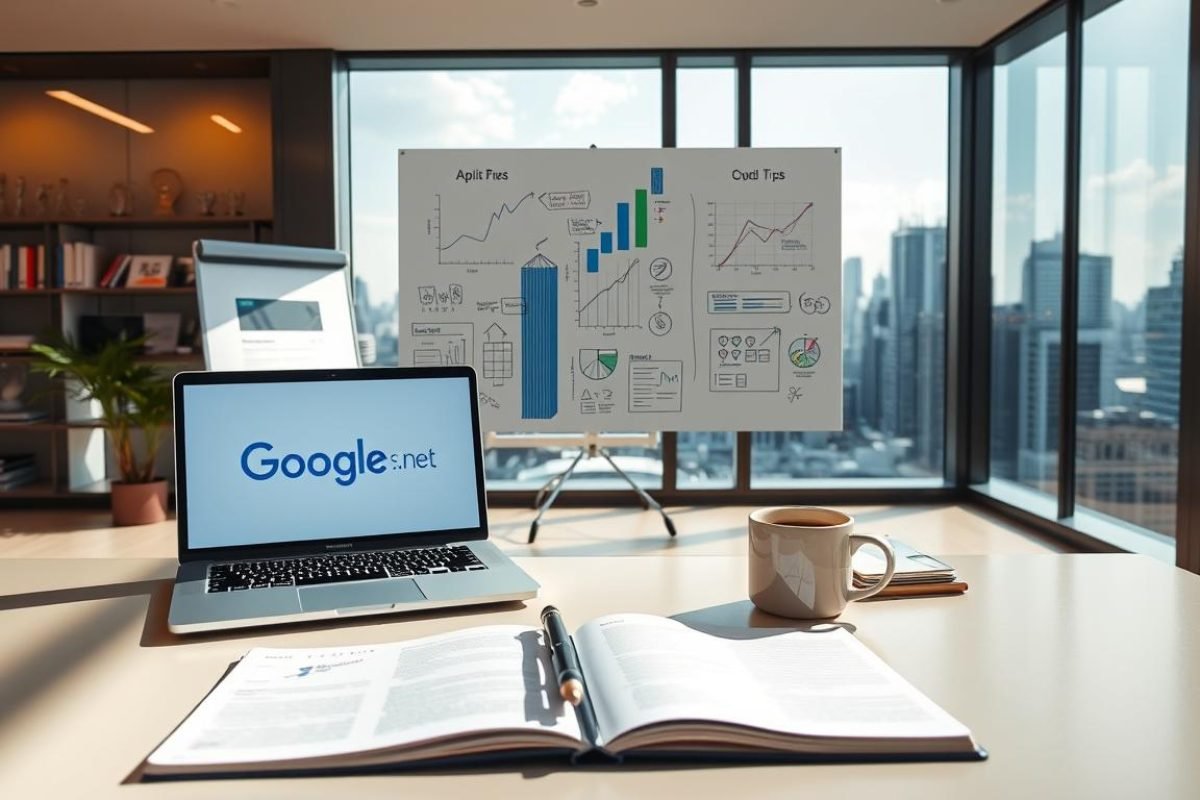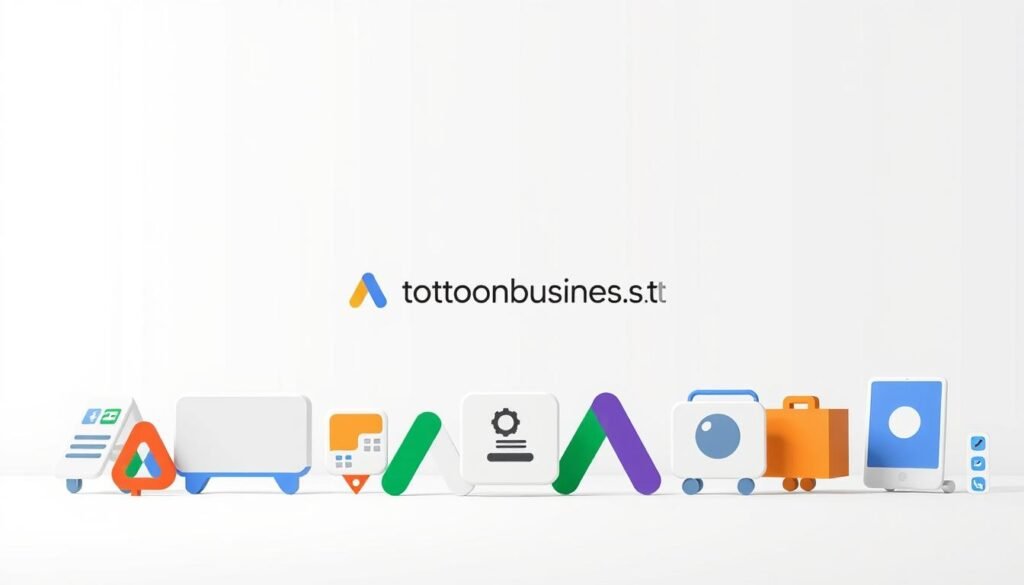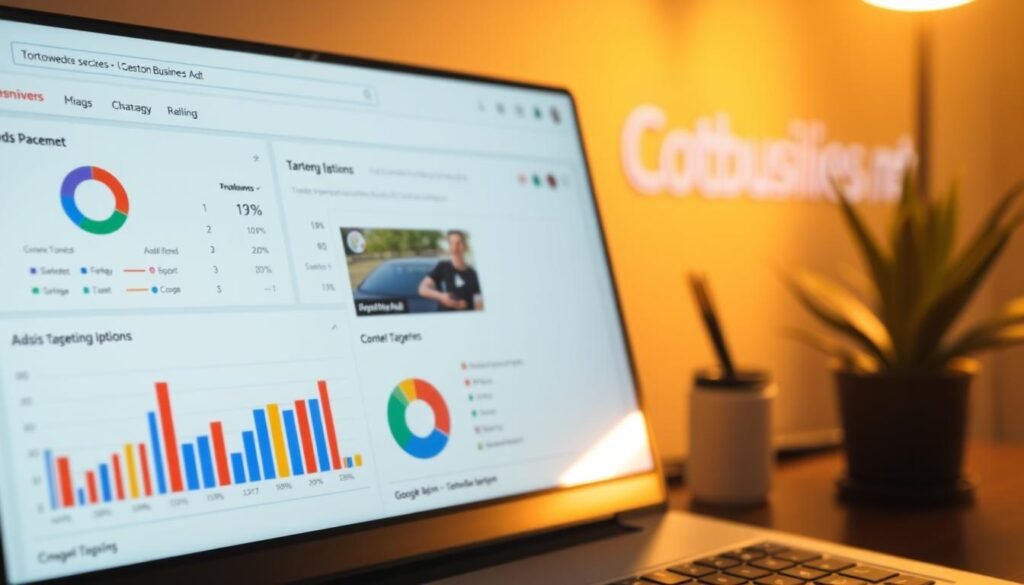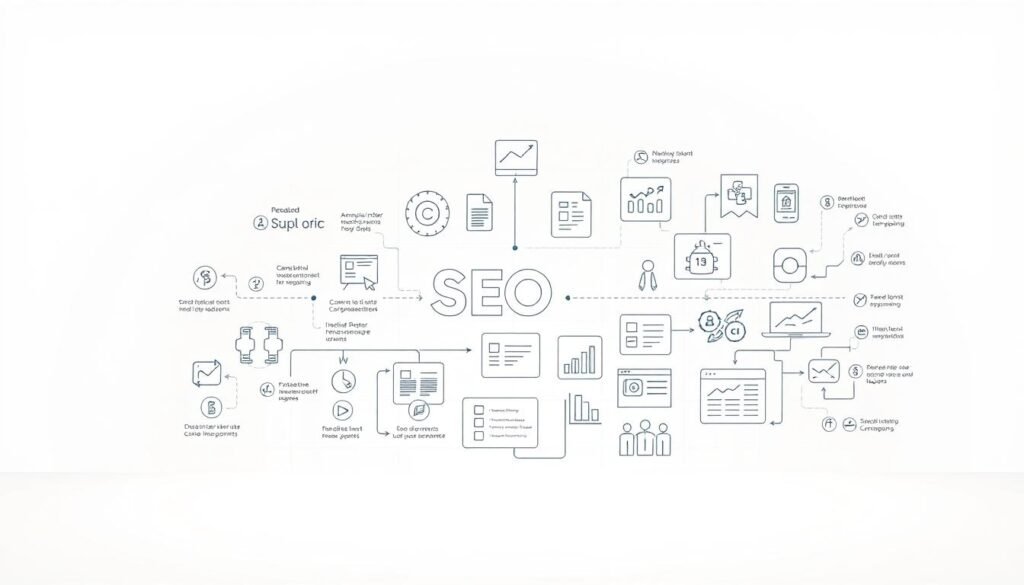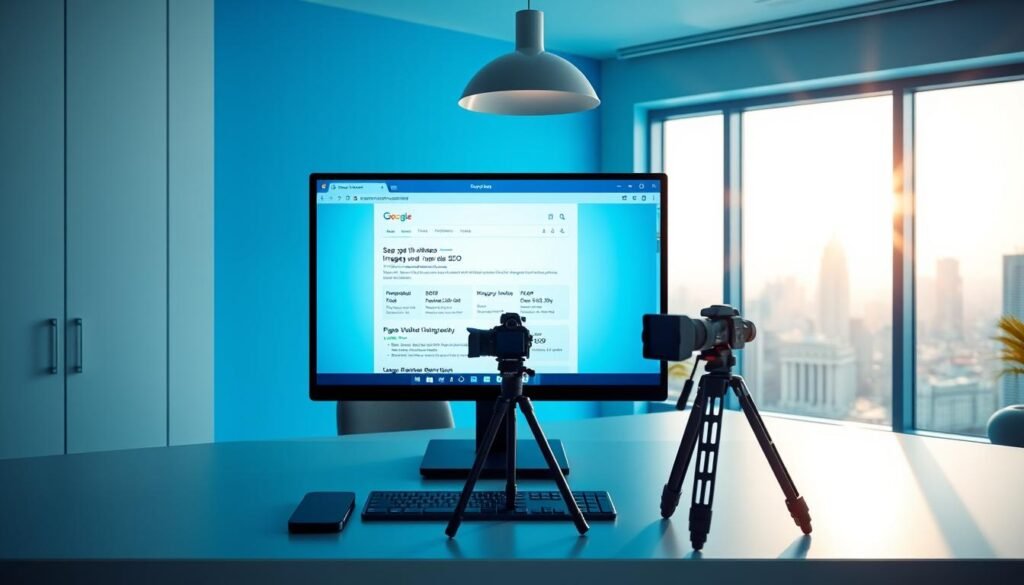The most common question is simple: will paid search deliver measurable results for my company? Right away, how can google ads help you advance your business goals answers this by linking targeted spend to clear outcomes like leads, sales, store visits, and calls.
Google Ads place targeted ads on Google Search, YouTube, Gmail, and a Display Network of over 2 million sites and apps. They run on a pay‑per‑click model so you pay only when someone interacts, which keeps spend focused on actions that matter to your website and store.
I’ve led campaigns that boosted local foot traffic and online conversions by aligning formats—search text, display images, Shopping carousels, and video—with specific goals. Industry data shows the reach of the Display Network helps connect the right audience at the right moment.
Practical next steps: set clear targets, pick formats that match those targets, and control bids to protect budget. For a consultation, call Us: +237 676550185 or Contact Us: contact@tontonbusiness.net.
Table of Contents
ToggleKey Takeaways
- Paid search ties spend directly to measurable outcomes like leads and sales.
- Ads appear across search, video, email, and a 2+ million site Display Network.
- PPC billing means you pay for interaction, not just impressions.
- Match ad formats and extensions to specific objectives for better results.
- Set clear targets, structure accounts wisely, and monitor KPIs for growth.
Understand Search Intent and Why Google Ads Fits Your Business Goals Today
Knowing why someone searches makes it possible to match messages to moments that matter. On the Search Network, you choose keywords so ads appear when people look for related terms. You also set location, language, and time-of-day to reach the right audience at the right moment.
On Display and YouTube, refine who sees creative by age, interests, and site categories. Use formats that align with objectives like calling the store, driving visits, app installs, or website actions.
“Map intent tiers—informational, comparative, transactional—to keywords and landing pages for clearer results.”
- Match keyword intent to landing pages so clicks lead to the expected information or action.
- Add negative keywords to filter irrelevant queries and protect spend.
- Layer audience signals—demographics and in-market segments—to focus ads on likely customers.
- Pick extensions such as call buttons for urgent mobile searches and structured snippets to pre-qualify traffic.
| Network | Best For | Key Controls |
|---|---|---|
| Search | Demand capture, qualified clicks | Keywords, schedule, location, language |
| Display | Awareness, remarketing | Age, interests, site topics |
| YouTube | Storytelling, reach | Demographics, placements, interests |
Measure early results to validate keyword-to-intent alignment and refine bids and creatives. Call Us: +237 676550185 | Contact Us: contact@tontonbusiness.net.
The Proven Benefits of Google Ads for Your Business
Running targeted campaigns puts a brand in front of active buyers faster than organic tactics.
Benefit summary: Google Ads lifts visibility above organic listings and across the Display Network. That placement helps capture high‑intent traffic and keeps a brand top of mind during buying moments.
Increase brand visibility and capture high-intent traffic
Appearing at the top of results increases clicks for ready-to-act searches. Use brand-keyword bids to own more real estate on the results page and protect interest from competitors.
Reach a precise target audience with keyword and demographic controls
Combine keyword selection with location, age, and interest targeting to filter irrelevant queries. This focuses ads toward likely customers and keeps quality traffic to your website.
Only pay for results with PPC to protect your budget
The pay‑per‑click model means you pay when someone engages. That preserves budget while you test creatives and bids.
Track performance with data to improve ROI over time
“Measure clicks, conversions, CPA, and ROAS to know what to scale.”
Built‑in reporting links to Analytics so teams iterate from real data and boost long‑term results.
| Benefit | Why it matters | Best use |
|---|---|---|
| Visibility | Top placement above organic | Brand and direct-response campaigns |
| Precise targeting | Keywords + demographics | Local and niche offers |
| Cost control | PPC billing focuses spend | Testing and scaling |
| Measurement | Click and conversion tracking | Optimization loops |
Practical note: brands like Threadheads report strong returns from remarketing display ads. Call Us: +237 676550185 | Contact Us: contact@tontonbusiness.net.
Match Your Goals to the Right Google Ads Campaign Types
Picking a campaign is a strategic step. Choose the format that fits the outcome you need so budget and creative work together.
Search campaigns for demand capture and qualified clicks
Search campaigns place text ads on results pages when people query relevant keywords. Use these to capture active intent and drive visits that convert.
Display campaigns for awareness, remarketing, and reach
Display campaigns use images across a 2M+ site network, Gmail, and YouTube. They are ideal for prospecting, building awareness, and cost-efficient remarketing to past visitors.
Shopping, Video, and App campaign options
Shopping campaigns show product images, prices, and merchant names on the SERP to accelerate sales by meeting comparison shoppers.
Video campaigns run on YouTube to tell brand stories with skippable and non-skippable formats. Use them for reach and creative messaging.
App campaigns automate placements across Search, Display, YouTube, and Play to grow installs and in‑app events efficiently.
“Align campaign type to the intended outcome — conversions, awareness, installs, or store visits — instead of forcing one format to do everything.”
- Local or Smart campaigns combine formats when store visits or simplified automation are priorities.
- Keep keyword strategy query-driven for Search and audience-driven for Display and Video.
| Campaign Type | Primary Use | Best Targeting | When to Pick |
|---|---|---|---|
| Search | Demand capture, qualified clicks | Keywords, location, schedule | High-intent queries and direct-response goals |
| Display | Awareness, remarketing, reach | Demographics, interests, site topics | Prospecting and lower-cost remarketing |
| Shopping | Product discovery, sales | Feed-based, merchant center | Ecommerce and product comparison shoppers |
| Video / App | Brand storytelling / Installs | Audience segments, placements, automated mixing | Brand reach or app growth goals |
Practical tip: align the audience and keyword mix to the chosen campaign to keep relevance high and costs lower. Call Us: +237 676550185 | Contact Us: contact@tontonbusiness.net.
Targeting Tactics That Put Your Message in Front of the Right Audience
Precise targeting turns ad spend into relevant clicks and deeper engagement. Start with keywords on Search, then add exclusion lists and layers that match where customers live and when they act.
Keyword intent: from exact matches to negative keywords
Use exact match for tight intent and phrase or broad match for scalable search coverage. Build negative keyword lists to block irrelevant queries and protect spend.
Location, device, time-of-day, and interest-based targeting
Layer location to show ads only where you serve customers—from ZIPs to radius targeting. Schedule by time and day to concentrate budget when activity peaks. Adjust bids by device to favor mobile call traffic or desktop conversions.
- Structure match types to balance control and reach.
- Maintain negative lists to filter poor matches.
- Use audience segments on Display and YouTube—affinity, in‑market, and custom segments.
- Test layering (in‑market + keywords) to boost efficiency.
- Align landing pages on your website to improve relevance and quality scores.
| Control | Why it matters | When to use |
|---|---|---|
| Match types | Balances precision and reach | Exact for high intent; phrase/broad for scale |
| Negative keywords | Protects budget from irrelevant clicks | Ongoing list maintenance |
| Location & schedule | Targets customers by place and time | Local offers and peak hours |
| Audience layers | Improves relevance on Display and Video | Use when behavior signals matter |
Measure performance frequently so bids and segments stay aligned with results. Call Us: +237 676550185 | Contact Us: contact@tontonbusiness.net.
how can google ads help you advance your business goals
Define SMART targets first. Specify measurable aims such as “increase online sales 15% in six months” so campaigns link directly to outcomes.
Pick formats that produce the actions you want. Use call buttons for phone leads, local assets and Maps for store visits, and app campaigns for installs and in‑app events. These features make tracking straightforward.
Align SMART goals with formats and features
Turn each goal into campaign settings, bids, and creative. Set KPIs—impressions, clicks, CTR, conversions, CPA, and ROAS—that match the objective.
From awareness to conversion: mapping campaigns to the funnel
Use Video and Display for early awareness. Deploy Search to capture demand. Add remarketing across formats to close the loop and lift conversion rates.
- Translate goals into bids, budgets, and clear success metrics tied to bottom‑line results.
- Build dashboards to track trends and trigger optimization when results drift.
- Update targets as markets shift so campaigns stay relevant and efficient.
Practical line: Call Us: +237 676550185 | Contact Us: contact@tontonbusiness.net.
Build a High-Performance Google Ads Campaign Step by Step
Start by defining the outcome the campaign must deliver and work backward from that target.
Choose the campaign type that matches the intended action—search for demand capture, Display or Video for awareness, Shopping for product sales.
Choose campaign type, structure ad groups, and craft compelling copy
Pick tightly themed ad groups that share closely related keywords. Grouping this way keeps relevance high and Quality Score strong.
Write ad copy that mirrors user queries and highlights offers, clear CTAs, and unique value.
Create relevant landing pages that match search intent
Send traffic to pages that fulfill the ad promise. Product keywords should land on product pages. Broader queries should reach category pages.
Set budgets and initial bids that fit your goals and timeline
Set a starter budget and use geo, device, and schedule settings to focus spend where conversions are likeliest. Implement conversion tracking and link the account to analytics.
Test and optimize: review search term reports, add negative keywords, and run A/B tests on ad copy and pages.
“Import product feeds into the Merchant Center to speed Shopping campaign setup and sync inventory.”
| Step | Action | Priority |
|---|---|---|
| Setup | Choose campaign type, create account structure | High |
| Targeting | Select keywords, negatives, geo/device/schedule | High |
| Landing | Match pages to intent and add conversion tags | Medium |
| Optimization | Test ads, refine bids, review terms | Ongoing |
Call Us: +237 676550185 | Contact Us: contact@tontonbusiness.net.
Smart Bidding and Budgeting: Get More Sales from Every Click
Bidding strategy and budget choices shape which clicks turn into measurable revenue.
Ad Rank still depends on your bid and ad quality, including CTR, relevance, and landing page experience. Manual CPC gives tight control at keyword level but needs steady management.
Automated options—Maximize Clicks, Target CPA, Target ROAS—use machine learning to hit objectives within a set budget. Start with conservative bids and a sensible learning window so the system gathers reliable data.
Manual vs. automated bidding
Use manual CPC when you need granular control. Pick automated strategies to scale decisions and free time for strategy work.
Target CPA and Target ROAS
Target CPA focuses on conversions at a set cost. Target ROAS shifts priority to revenue, ideal for ecommerce campaigns that track sales value.
Monitor CPC, CTR, and conversion data
Watch keywords with high CTR but low conversions and lower bids or refine targeting. Raise bids for low CTR terms that convert well.
- Balance manual control with automation for efficient scaling.
- Shift budget to campaigns with the best marginal returns over time.
- Use negatives and query-level data to cut wasted spend.
- Document bid rules and thresholds for consistent optimization.
“Improve ad quality with tight copy and matched pages to reduce CPC by raising Ad Rank.”
Practical line: Call Us: +237 676550185 | Contact Us: contact@tontonbusiness.net.
Measure What Matters: KPIs and Optimization Loops
Good measurement focuses on a few metrics that predict real outcomes. Start with clear north‑star targets, then map supporting indicators that guide daily work.
Core metrics to watch
Impressions, clicks, and CTR show reach and initial engagement.
Conversions, CPA, and ROAS reveal whether spend drives real revenue.
Integrate Google Analytics so trend graphs link clicks to website conversions and to richer data for analysis.
A/B testing for sustained lift
Run controlled tests on headlines, descriptions, and landing pages to isolate what boosts performance. Use statistical thresholds before declaring a winner.
- Pick north‑star metrics by goal type — CPA for lead gen, ROAS for ecommerce.
- Set a cadence: weekly term reviews, biweekly creative tests, monthly budget moves.
- Segment by device, location, audience, and time to find efficiency pockets.
- Document learnings and apply them across campaigns to compound results.
“Measure the right things and make decisions from reliable data, not noise.”
Practical line: Call Us: +237 676550185 | Contact Us: contact@tontonbusiness.net.
Real-World Use Cases: Ways Businesses Advance Goals with Google Ads
Practical use cases reveal which tactics generate qualified leads, repeat visits, and sales. Below are concise examples that show how different formats move potential customers along the funnel.
Drive website traffic and qualified leads with search
Search listings appear at the top of results and pull in high‑intent traffic website visitors. Target long‑tail queries to capture qualified leads and route them to pages with clear next steps.
Retarget visitors with display to boost conversion rate
Display remarketing shows image ads to visitors who browsed but did not convert. Many businesses report strong returns when using dynamic creative to feature viewed products. This re‑engages potential customers and lifts conversion rates.
Showcase products with Shopping for higher purchase intent
Shopping ads display product images, prices, and merchant names on the SERP. That format meets buyers while they compare options and often converts well because purchase intent is high. Add branded search to defend SERP space and prevent competitors from siphoning demand.
- Combine search with location extensions to drive calls and in‑store visits.
- Test video for awareness, then retarget viewers with search and display.
- Shape offers by audience segment—new users see intro offers; returning users see urgency or bundles.
- Align measurement to each use case—lead quality for B2B, ROAS for ecommerce—so results are clear.
“Deploy a mix of formats to match intent and measure by the metric that matters most to the campaign.”
Practical line: Call Us: +237 676550185 | Contact Us: contact@tontonbusiness.net.
Conclusion
A focused ad strategy ties spend to clear, measurable outcomes across channels.
Google connects people who are actively searching or browsing with offers on Search, Display, Shopping, YouTube, and App placements. That PPC model is highly targetable and measurable, so campaigns drive calls, visits, installs, leads, and sales.
By aligning goals, formats, and targeting you’ll see how a well-structured google ads campaign helps advance business priorities. Prioritize measurement and iterate: each test sharpens results and compounds gains.
The benefits are clear—precise reach, control over spend, and transparent KPIs that tie marketing to revenue. Start with one focused campaign, track it closely, and scale from what works.
Call Us: +237 676550185 | Contact Us: contact@tontonbusiness.net.

